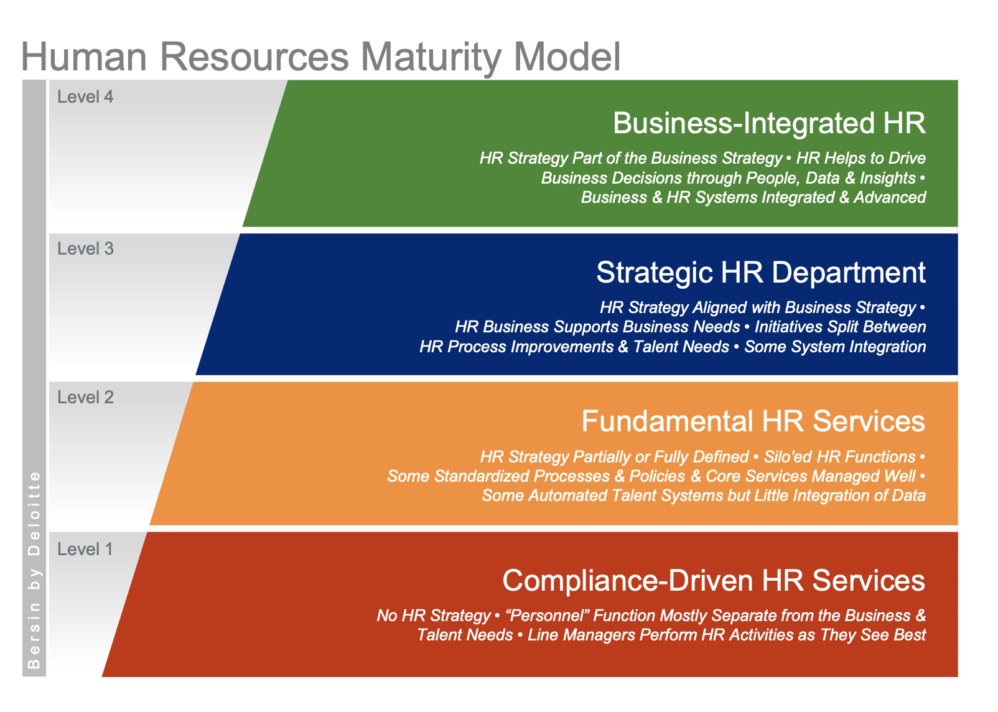How to measure the effectiveness of your employer branding?

Building a positive reputation as an employer is one of the top goals for many companies, but how can you do it effectively? We talk to Kinga Makowska from HR Rebels about measuring the effectiveness of your EB efforts.
Employer branding is a great way to stand out from the competition and attract top-notch candidates. A strong employer brand can also help you significantly reduce hiring costs. Companies with a positive reputation receive more applications from candidates who are a better fit.
The key to success with employer branding is to make sureit’s not just a bunch of catchphrases. To achieve this, you need to measure the impact of your efforts. How can you do that? We talk to Kinga Makowska from HR Rebels, a judge of the OLX Recruitment Leaders competition, which evaluates and recognizes the most efficient recruitment campaigns in Poland with awards.
Human Panel: Employer branding is already a widely used term, but can we say the same about measuring EB effectiveness?
Kinga Makowska: According to the nationwide survey of HR analytics in Poland, only a minority of companies measure HR ROI (Return on Investment) and even fewer measure EB ROI. However, there is a whole range of different EB maturity levels that fluctuate between chaos and structured metrics.
If a company has an analytical background and tends to be data-driven, it is likely to be more mature in measuring EB effectiveness. On the other hand, there are companies that run EB activities just for the sake of it, which can be a trap.

So how do you measure employer branding effectiveness?
There are three levels of measuring the EB performance:
The first is accessible to any company. It involves checking whether we are achieving our objectives in the various initiatives we run, both candidate and employee-related.
Let’s take an example that is often perceived as tough to measure, namely an event. We can’t rely on automated metrics, but several numbers can be assumed and calculated afterwards: number of people reached with information, invited, those who RSVP-ed, those who showed up, as well as how good an experience was generated through the event. Whenever we dig deeper, we find numbers to choose from.
The second level requires more tactical thinking about our initiatives in the short term. Let us say we want to raise employer awareness among final year medical students. We are preparing a series of events, an online campaign and so on. Here, we should assign an indicator to each activity and measure the overall effectiveness in terms of a specific outcome, such as the number of applications sent by students.
The highest level – strategic – is much more complex. Here, we have an advanced plan with several focus areas and long-term goals with detailed indicators to help us measure results.
The best companies work on all three levels simultaneously. The biggest challenge is to start and change company mindset, from perceiving EB as an intangible or non-important to allowing it to assume a business-related role in the HR portfolio.
Kinga Makowska, HR Rebels
So what should be the first step and what can help us do it?
Always start with the mindset. It’s easier if you think of EB as a convergence of other areas such as digital marketing, new media, IT and efficiency-focused HR. If you are familiar with measuring the effectiveness of Facebook ad campaigns or working with data, you’ll find it easy to explore different datasets available through company channels.
Working in employer branding or HR we have access to lots of data. The key is to link and connect it in order to draw any conclusions. It’s good to be open and talk to other teams and departments about how they measure their results, especially at the start of your EB analytics journey.

What specific data points or sources can be useful in measuring EB?
Company data usually comprises multiple data sources, but it’s always up for discussion whether the actual dataset has an important role in one particular process. Some examples of factors companies measure even outside of EB include: – employee satisfaction, eNPS, employee engagement, turnover, recruitment effectiveness. Organizations may also use panel surveys or targeted studies to test how they their target audience view them. Some internal surveys are associated with certification or audit processes. What’s important is that all research should be aligned with company business needs, addressing significant questions related to employer brand.
Let us talk about employer branding in recruitment. How can we transfer EB activities to talent acquisition?
In theory, recruitment communication should be a part of the employer branding approach. Companies have a dual responsibility: to convert candidates into good employees and to ensure a positive experience along the way. Sometimes we complicate the process at an operational level and don’t align the EB initiatives with recruitment campaigns. They differ in message and tone of voice. However, the ownership is on both sides: both recruiters and employees are responsible for communication.

How can we measure the effectiveness of EB in recruitment?
There are several methods that are many companies use, which can provide valuable insights:
Feedback from candidates. It is a very valuable source of data, but some companies only collect feedback from the successful candidates whom they eventually hired, while they should also survey those who they rejected. However, we should keep in mind that the answers of the candidates who really want a job can be biased.
Marketing data and brand awareness. Particularly if we are in the B2C space, consumer perceptions of our brand may be very similar to perceptions of our brand as an employer.
Evaluating candidate experience. Even if someone has not applied for a job yet, we can ask them a few questions in a simple survey. These are aimed at people who are not yet in our funnel but might be interested in applying.
Reviews on Glassdoor and other websites. Soliciting opinions can give us interesting insights – the key is to evaluate the accuracy of the data.

What are the maturity models for HR analytics and how can they contribute to EB effectiveness?
They are models introduced by Josh Bersin that help classify an organization’s HR maturity level. They show how proficient an organization is at using data. There are four levels that cover the scale of a company’s maturity level:
Compliance-driven HR services. This level features responsive reporting of operational and compliance measures, with a focus on accuracy, consistency and timeliness of data. In other words, it is HR, which collects basic HR metrics but has no impact on the organization’s policies and KPIs. It is reactive and “does what it needs to do”.
Fundamental HR services. At this level, organizations have HR strategy, tools, and processes, but we have no influence on the business. HR produces reports for decision makers and analyzes trends and benchmarks. This is typical of siloed organizations where HR is not connected to other departments and operates in isolation.
Strategic HR Department. This level means that organizations perform statistical analysis, identify problems and actionable solutions, centralize staff, and integrate data. Often organizations at level 3 have HR business partners that connect the business to HR. What they lack is a centralized database that everyone can access.
Business-integrated HR. At this level, HR is a strategic partner for the business and doesn’t only use data to manage the workforce. HR managers have real influence, on par with the C-level. Here, companies can develop predictive models, data governance models, and do scenario planning. And analytics integrates into business and workforce planning.

Where are we – in general – on the Bersin scale?
In 2018, Bersin claimed that 84% of companies are at levels 1 and 2 and very few of organizations reach level 4. This happens at companies where employer branding is driving change – like Phillip Morris, which just won two Employer Brand Management Awards for their #MakeHistory value proposition to potential employees.
I would say that a litmus paper is a question: does EB meet business needs? Is it congruent with the goals of the business?
Mature employer branding can positively change the entire organization – but it needs to be consistent and cohesive.
Would you like to measure the effectiveness of your employer branding efforts to align them with business goals? Try Human Panel, a people analytics platform that makes you manage your HR through measurable KPIs and supports your decisions with facts and figures.




